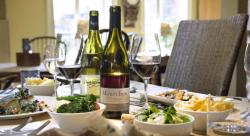
Diversification, a reputation for quality and the ability and flexibility to be early adopters have combined to put BBR at the forefront of the global wine trade. Eight generations of Berrys and three generations of Rudds after it was founded, I visited its headquarters at 3 St James’s Street, London, to see Geordie Willis, BBR’s creative director, to find out more.
It has often been said that in retail, as with buying property, the three most important criteria for success are location, location and location. This was absolutely the case for BBR. Willis tells me that the original shop was built on the site of one of Henry VIII’s tennis courts.
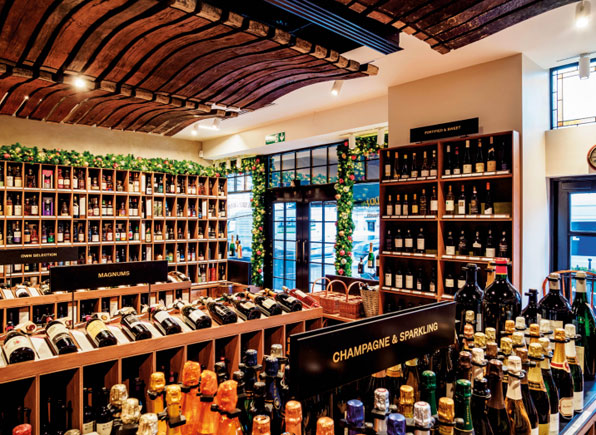 ‘This shop was right on the most westerly point of what was then central London,’ he says. ‘The view from the front window was open fields. In 1698, after a huge fire destroyed Whitehall Palace, the royal court moved to St James’s Palace, which instantly made St James’s Street one of the most soughtafter addresses in London.’
‘This shop was right on the most westerly point of what was then central London,’ he says. ‘The view from the front window was open fields. In 1698, after a huge fire destroyed Whitehall Palace, the royal court moved to St James’s Palace, which instantly made St James’s Street one of the most soughtafter addresses in London.’The shop, which was started by a lady now known only as the Widow Bourne, first sold groceries, tea, spices and coffee. At the time a pound of tea cost more than £10, when typical annual earnings for ordinary workers were less than £15.
The company received its first royal warrant in 1903, after inventing The King’s Ginger - a liqueur to keep one warm while driving – for Edward VII for use on his travels. But its relationship with the royal family dates back further, to when BBR supplied George III with groceries.
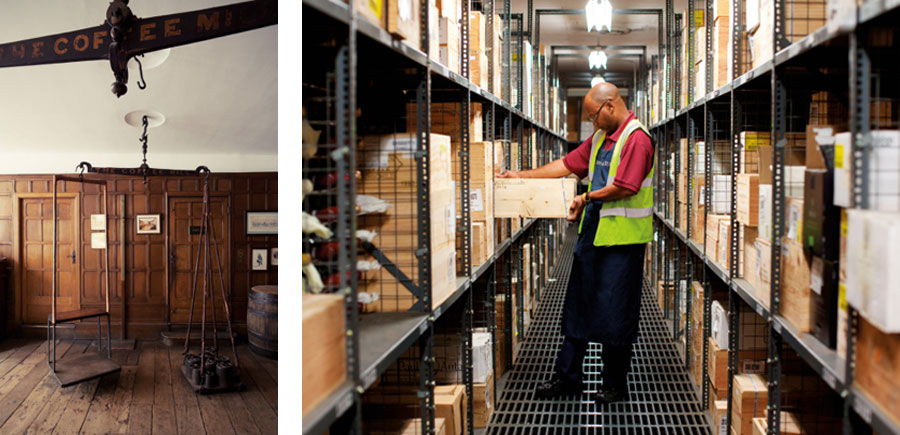
With a nod to the past and Widow Bourne, the sign hanging outside depicts a coffee mill, painted in gold on a black background.
One could be forgiven for thinking that the ancient shop is being held together by its paint, but once inside and beyond the original shop nothing could be further from the truth. The building, or more correctly buildings, for there are 12, opens up like a Tardis into a fascinating labyrinth of rooms.
The whole interior exudes quality and character in equal measure, and the attention to detail in the restoration of the old and creation of the new is second to none. Everything is simply immaculate.
A newer shop, which opened in 2017 at 63 Pall Mall, offers approximately 1,200 different wines to suit every palate and pocket. There is a wonderfully welcoming ambience in the shop and a sense of the company’s long history.
The ceiling is covered with thick wooden beams made from 100-year-old barrels, music softly plays and a bell above the door has been calibrated to precisely the same pitch as the one in the original shop, so regulars feel as if they have returned home when entering.
The staff are incredibly knowledgeable about wine and, unexpectedly for such a grand company, are very approachable and clearly willing to go above and beyond to help customers find the perfect bottle.
The development of a purpose built, ultra-modern facility in Basingstoke, where there is capacity for about 14 million bottles, 50% of which are stored on behalf of clients, has freed up space in St James’s Street for further expansion.
There are now five fabulous event spaces, where more than 1,600 corporate and social events are held each year. Seven dining rooms are serviced by ten full-time chefs, headed by Michelin-trained Stewart Turner. They work out of four kitchens, delivering 250 covers a day. There is also a wine school that offers over 200 tastings and courses each year. It really is a centre of excellence.
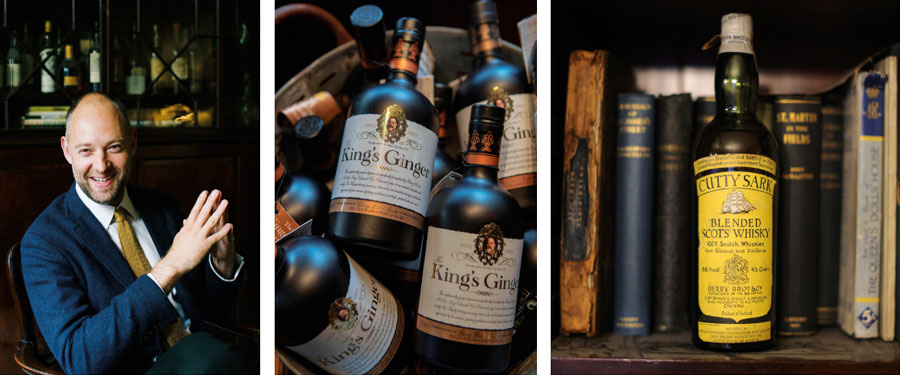
Helen: Over the years, as borne out by your cellars, there have been trends in popular wines. We all remember the frenzy for Beaujolais nouveau, the preference for oaked chardonnay over crisp Chablis and, recently, rosé and prosecco. What do you think might become the next trendy tipple?
Geordie: With the rise of the buy-and-eat-local movement, more customers are turning to English wine as a staple of their fridge. In addition, lower alcohol wines such as off-dry rieslings, Loire white wines and the lighter reds and whites of Burgundy are also seeing increasing favour.
HB: What should the canny buyer seek to buy now as a Christening gift or to lay down for sale or a legacy?
GW: The top Bordeaux wines, from the best vintages, have traditionally held their value well. However, for me, my personal recommendation is always either a case of port or a case of a dessert wine such as Château d’Yquem – or one of each!
These wines are both underrated styles – but incredibly versatile. They age for many decades and can be enjoyed both on their own and with myriad foods.
Versatility is important when buying a gift for someone you don’t (yet) know very well.
HB: There are some excellent English wines emerging. Can you see a time when we will become a major producer of wine? And if so, why?
GW: English sparkling wines in particular are winning accolades at wine competitions around the world. However, in terms of volume, we are still quite small, a few million bottles being produced in a year – that’s only around 1% of what many of the classic French wine regions produce.
While this will grow, it will be a slow increase, since vineyards take many years to establish and start producing the finest quality grapes.
HB: The rise in the availability and popularity of English sparkling wine is clearly a success story, but do you think it is sustainable? What will contribute to its future success?
GW: I think it is sustainable, partly because we are a relatively small producing region. Due to the very high cost of setting up vineyards and making wines in the UK, the sheer hard work and grappling with a difficult climate, those who make wine really have to want to.
One example is Hambledon Vineyard in Hampshire. The owner, Ian Kellett, is such a supporter of English sparkling wine and it shows in his own wines. We love it so much, Hambledon even makes our Own Selection English Sparkling for us. They put a lot of care and skill into their wines and the result is a consistently high-quality product.
HB: Do you target women in your marketing? If so, how?
GW: It is important for us that women feel welcome in our historic home and are comfortable asking questions and discussing their needs when building their cellars. Our marketing is generally focused on reaching people with a passion for wine irrespective of gender, though we have recently introduced events that are more aimed at our female collectors.
For example, we just hosted a food-and-wine-matching dinner in our beautiful Sussex cellar, hosted by one of our Masters of Wine, Barbara Drew. The event was just the same as it would have been for a mixed group, but we know from speaking to our collectors that some women find it easier to express their opinions in an environment with other women.
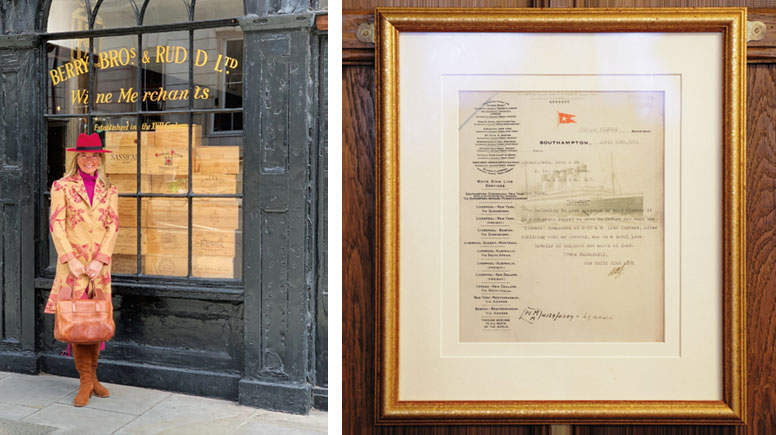
GW: It’s hard to generalise about the preferences of our buyers. Women are as likely to buy first-growth Bordeaux as they are to buy vintage champagnes, Chablis or rosé. The perception of women as only interested in rosé is certainly false when it comes to our customers.
HB: With a predominantly female board, you are clearly respected, but are you unusual in the industry?
GW: We are. The wine industry has traditionally been male-dominated, and many wine merchants still have almost exclusively male boards. For us it is important to have women in leadership positions, and not just at board level.
For example, of our three Masters of Wine, two are women. Our approach is not to champion women specifically, but to champion talent development in people regardless of gender.
HB: What percentage of your trade or private buyers are women?
GW: As with most of the wine industry, the proportion of customers who are women is far smaller than we would like. However, it is certainly increasing, and even over the past five years we have seen a shift in this area. More women now view wine not just as something to drink and enjoy but as something to collect, even to obsess over.
HB: Has your business seen an increase in female buyers from any specific parts of the world?
GW: At the moment there are no specific regions we would single out. What is noticeable is that there has been a definite shift. We are seeing more women becoming interested in starting to build a cellar, both in the UK and globally.
This often goes hand-in-hand with the increase in wanting to learn about wine – whether that is women attending masterclasses about specific producers or vintages or wanting to learn more through our podcasts and our brochures.
They want to make sure they are armed with the information they need to build the perfect collection.
HB: Historically, you were forerunners of promoting health – I’m thinking of the giant weighing scales here. What do you currently do to support the message of drinking alcohol in moderation?
GW: We are very proud of our relationship with the charity Drinkaware, and we want to continue to educate our customers about ways to reduce their alcohol intake. Sometimes this can be as simple as drinking less but of better quality.
HB: And finally, the best advice?
GW: Never fall in love with a wine on holiday!
HB: Geordie, it was a pleasure to meet you.
GW: Thank you.
♦ bbr.com







